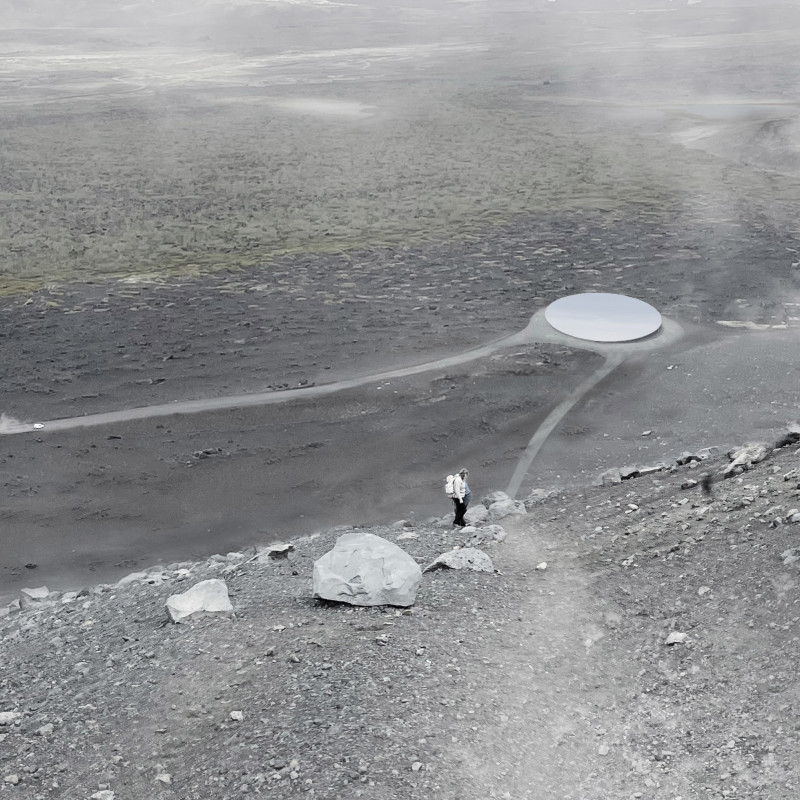5 key facts about this project
The café by Hverfjall Volcano is located in the Mývatn region of northern Iceland, characterized by its volcanic landscape and calm lake. The café serves as a rest stop for hikers and a comfortable meeting point for visitors. The design emphasizes harmony with the surroundings, featuring a roof that acts as a mirror to reflect the sky, enhancing the connection between the structure and its environment.
Roof Design
The standout feature of the café is its concave mirrored roof, which reflects the nearby Lake Mývatn. This roof's circular shape allows it to blend naturally with the landscape. It is elevated on one side, creating a sense of openness while maintaining a connection to the volcanic terrain below. The tapering design draws visitors' eyes upward, encouraging them to appreciate the expansive sky.
Structural Elements
The café is supported by four main columns made from prestressed steel plates. These columns provide necessary stability while keeping the overall structure light. Their placement ensures that the roof remains visible from the trails, marking the site in the landscape. This careful balance of form and function encourages interaction with the natural surroundings.
Public Space and Visitor Experience
Visitors enter through a dark tunnel defined by a large curved wall that opens into a public courtyard. On one side of the courtyard is the café, while the other side features a public pool for visitors to use. This design preserves the volcanic geology and offers a communal area for various gatherings, enriching social interactions among guests.
Interior Ambiance
Inside the café, the atmosphere provides a contrast to the outside. The layout separates the public areas from the working spaces, allowing for a comfortable visitor experience without disrupting service. Design elements draw inspiration from the local landscape, helping to connect guests with the stunning scenery around Hverfjall Volcano.
The café's mirrored roof serves not just as an architectural feature but as a reflection of the environment, creating a strong link between the building and the landscape it occupies.






















































